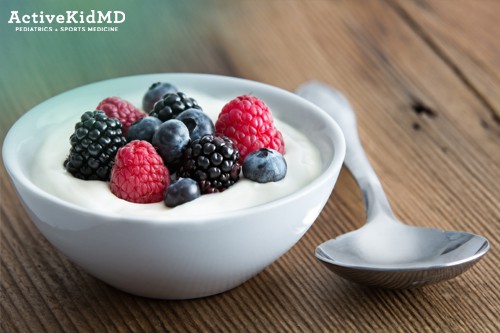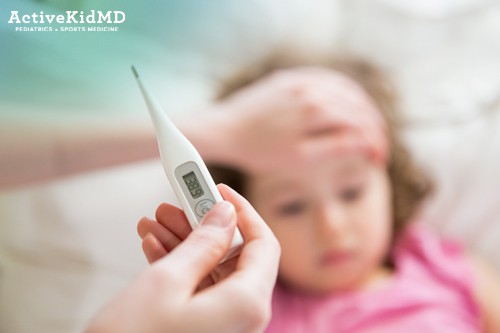Your child has been prescribed an antibiotic medicine.
Antibiotic medicines are “anti” or used to fight against the growth of bacteria. They are important medicines to use to reduce illnesses caused by certain, shall we say, “bad” bacteria that cause fevers, swelling, and other signs of infection. When used properly, they can lead to quicker return to usual health and even be lifesaving.
Now, realize that not all bacteria are “bad” or harmful.
There are many types of bacteria that normally live on the skin, in the lungs and in our gastrointestinal tract (mouth, stomach and intestines). These more “good” bacteria help with digestion, breathing and a strong skin barrier.
Unfortunately, antibiotics aren’t fully selective when treating infections caused by the “bad” bacteria, causing the numbers of “good” bacteria to also be reduced. This may lead to antibiotic side effects such as diarrhea, stomach upset, and risk of other infections and illnesses.
The decision to use an antibiotic medicine (or any treatment) involves balancing the risks and benefits for each patient. This choice considers the type of illness, overall current/past health of the patient, and thoughts from medical team and families.
What can be done to increase the “pros” from antibiotics while reducing the “antis” or “cons”?
Boost those good bacteria
If antibiotics are against bacteria, probiotics can work to increase bacteria, especially those that routinely live in the gut and stomach. Sensible choices that contain these probiotics and are bacteria friendly include yogurt with live cultures, sauerkraut, sourdough bread, kombucha, pickles, buttermilk, and cottage cheese. There are also probiotic supplements made for babies, toddlers and older children/adults that can be used. The benefits of food sources include collateral benefits (such as calcium and protein with yogurt) and ease of absorption.

Mixing probiotic-rich and phenol choices can especially reduce diarrhea, bloating, and cramping often seen during antibiotic treatment.
RELATED TOPIC: A smooth way to increase vegetable intake in your child.
Use antibiotics as prescribed
Once antibiotics are selected as the course of action, it is best to use them as directed and to complete the recommend duration of treatment. Discuss any concerns with the prescriber if there are taste issues or any side effects. Please do not use past or leftover prescriptions (or antibiotics prescribed for someone else).
In children medication doses are often based on the child’s weight, not on age. Make sure that your child is prescribed an appropriate antibiotic amount for their current weight.
Liquid, pill, chewable – which works best?
The antibiotic that works the best for each child is the one that is taken as prescribed. There is no difference on strength between liquid, pill, or chewable. Be realistic about what works best for your child. Remember that kids who can usually take pills may struggle with swallowing if they have sore throats or a lot of nasal drainage. In those cases, liquid or chewable medications may better tolerated.
Do you need antibiotics with every infection or illness?
Overuse of antibiotics has led to resistance where certain bacteria do not respond to usual medication choices. This can lead to use of stronger antibiotics (that can have more side effects) and longer, more complicated healing courses. Over the last few decades, medical professionals have made efforts to reduce antibiotic use in efforts to limit the development of “super bugs” that may not respond to any type of antibiotic treatment. We want to respect the healing powers of antibiotics and the potential of overuse that limits these healing abilities.

Using antibiotics “just in case” for more apparent viral infections often does nothing to help the patient while increasing risks of resistance and side effects. In many of these cases, periods of observation with use of pain/fever reducing medications can reduce the need for antibiotics.
Can I still use pain and fever-reducing medications with antibiotics?
Yes. Children who have been prescribed antibiotics can still use acetaminophen or ibuprofen for reducing fevers and discomfort. It is also important to make sure the child is drinking plenty of fluids, and don’t forget to use the probiotic and phenols listed above.
There are certain other over the counter and prescription medications that may not blend as well with antibiotics. At your doctor appointment, it is key to provide a list of all current medications and supplements currently being used to your provider and bring up any specific concerns about taking medications while on antibiotics.
Still have questions? Give us a call.
RELATED TOPICS: Ear infections: Do All Need Antibiotics?


